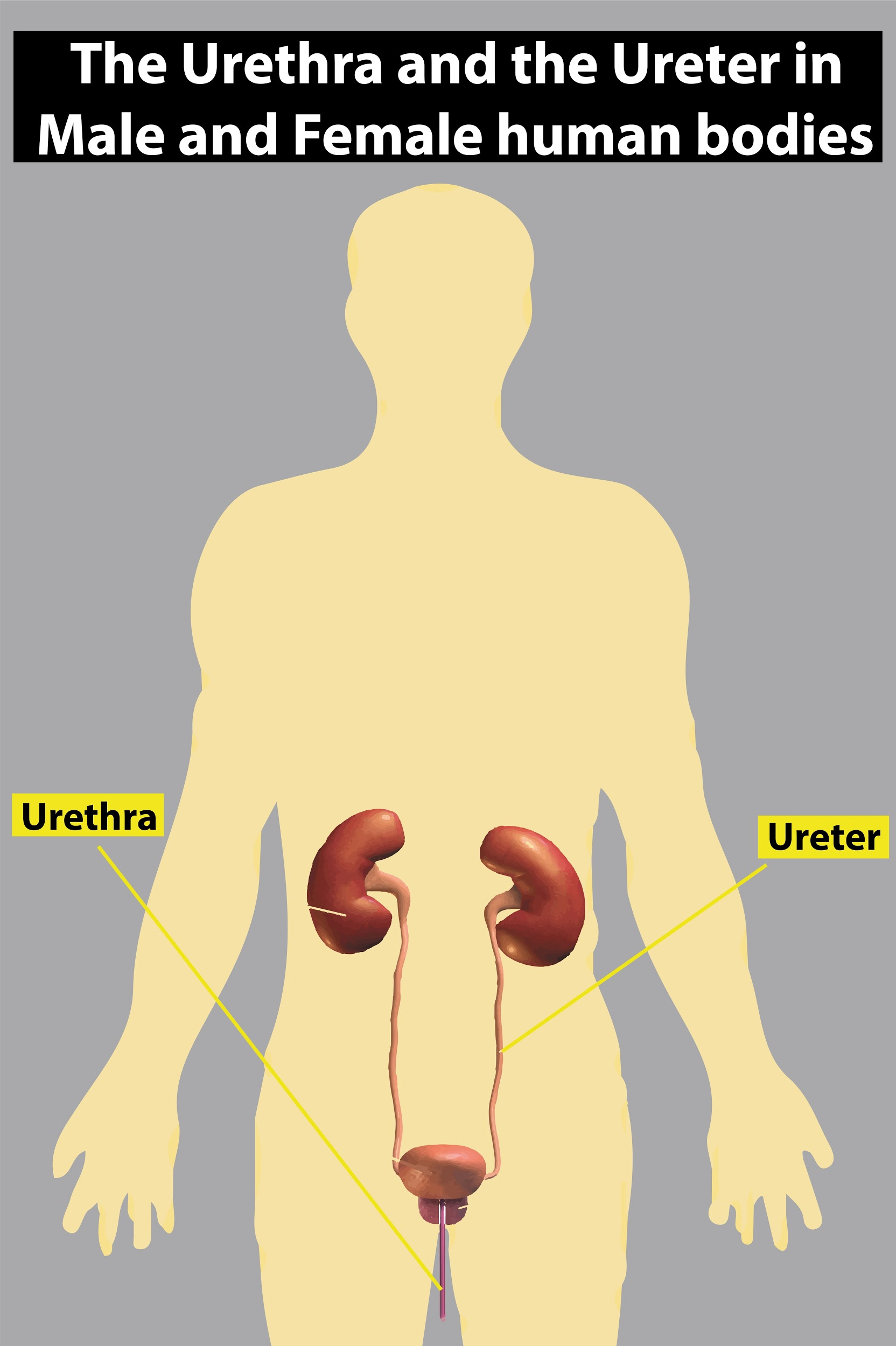
Differentiate between ureter and urethra based on their function.
Answer
489.3k+ views
2 likes
Hint: The major difference between the ureter and urethra is based on their function. The ureter has a role in excretion in humans. The urethra also has a role in excretion in humans, but it additionally has a role in ejaculation in males.
Complete answer:
Additional Information: -The male urethra comprises three parts - prostatic, membranous, and spongy.
-Ureters have smooth muscles that contract urine by peristalsis. The distal end of the urethra is controlled by a nerve and is under voluntary control.

Note:
- The male urethra is longer than the female counterpart as it has to travel all the way from the bladder to the penis opening. Females have an average urethral size of 4 cm.
- Male urethra have bulbourethral glands or Cowper’s glands. They are homologous to Bartholin’s glands in females.
- These organs are a part of the excretory system which helps in the storage and excretion of urine from the body.
Complete answer:
| Ureter | Urethra |
| The ureter carries urine from the kidneys to the urinary bladder in the body. | The urethra carries the urine from the urinary bladder to the urinary meatus in humans. Additionally, it also helps in ejaculation in males. |
| The upper half of the ureter is located in the abdomen proper and the lower half is in the pelvis. | The male urethra begins from the urinary bladder and ends at the head of the penis. In females, it begins at the neck of the bladder, passes inferiorly through the perineal membrane and muscular pelvic floor, and opens directly in an area between the labia minora known as the vestibule. |
| Ureters exist in a pair. | Only one urethra exists in the body. |
| The urethra is made of transitional, pseudostratified columnar, and stratified squamous epithelium. | The ureter is made of the urothelium, a type of transitional epithelium. |
Additional Information: -The male urethra comprises three parts - prostatic, membranous, and spongy.
-Ureters have smooth muscles that contract urine by peristalsis. The distal end of the urethra is controlled by a nerve and is under voluntary control.

Note:
- The male urethra is longer than the female counterpart as it has to travel all the way from the bladder to the penis opening. Females have an average urethral size of 4 cm.
- Male urethra have bulbourethral glands or Cowper’s glands. They are homologous to Bartholin’s glands in females.
- These organs are a part of the excretory system which helps in the storage and excretion of urine from the body.
Latest Vedantu courses for you
Grade 11 Science PCM | CBSE | SCHOOL | English
CBSE (2025-26)
School Full course for CBSE students
₹41,848 per year
Recently Updated Pages
Master Class 4 Maths: Engaging Questions & Answers for Success

Master Class 4 English: Engaging Questions & Answers for Success

Master Class 4 Science: Engaging Questions & Answers for Success

Class 4 Question and Answer - Your Ultimate Solutions Guide

Master Class 11 Economics: Engaging Questions & Answers for Success

Master Class 11 Business Studies: Engaging Questions & Answers for Success

Trending doubts
Give 10 examples of unisexual and bisexual flowers

Draw a labelled sketch of the human eye class 12 physics CBSE

Differentiate between homogeneous and heterogeneous class 12 chemistry CBSE

a Tabulate the differences in the characteristics of class 12 chemistry CBSE

Why is the cell called the structural and functional class 12 biology CBSE

Differentiate between insitu conservation and exsitu class 12 biology CBSE




